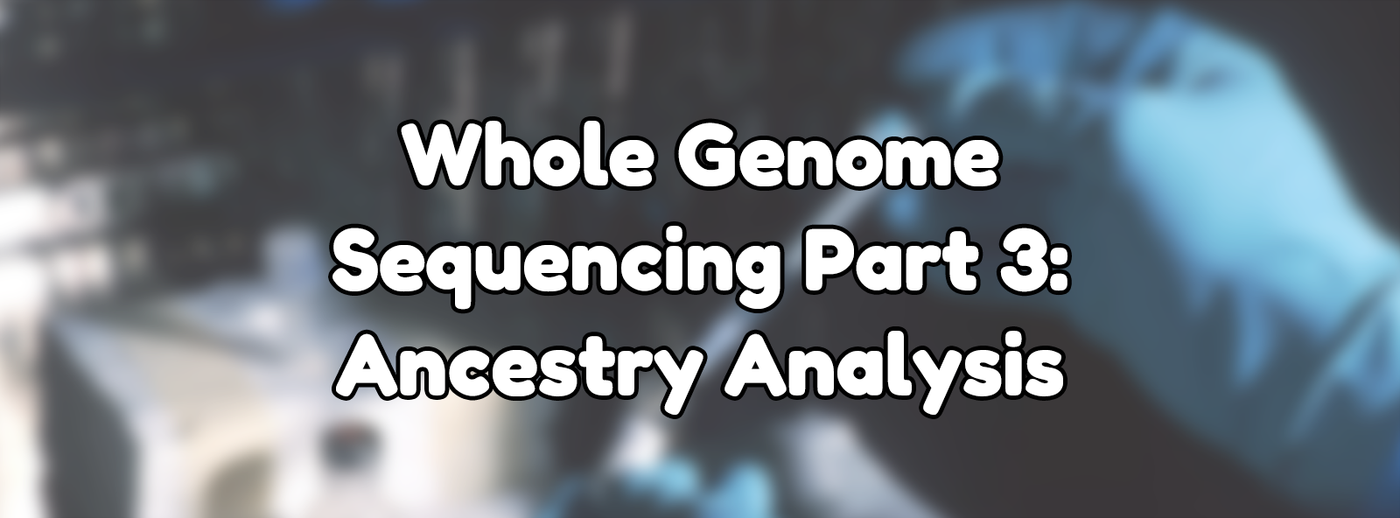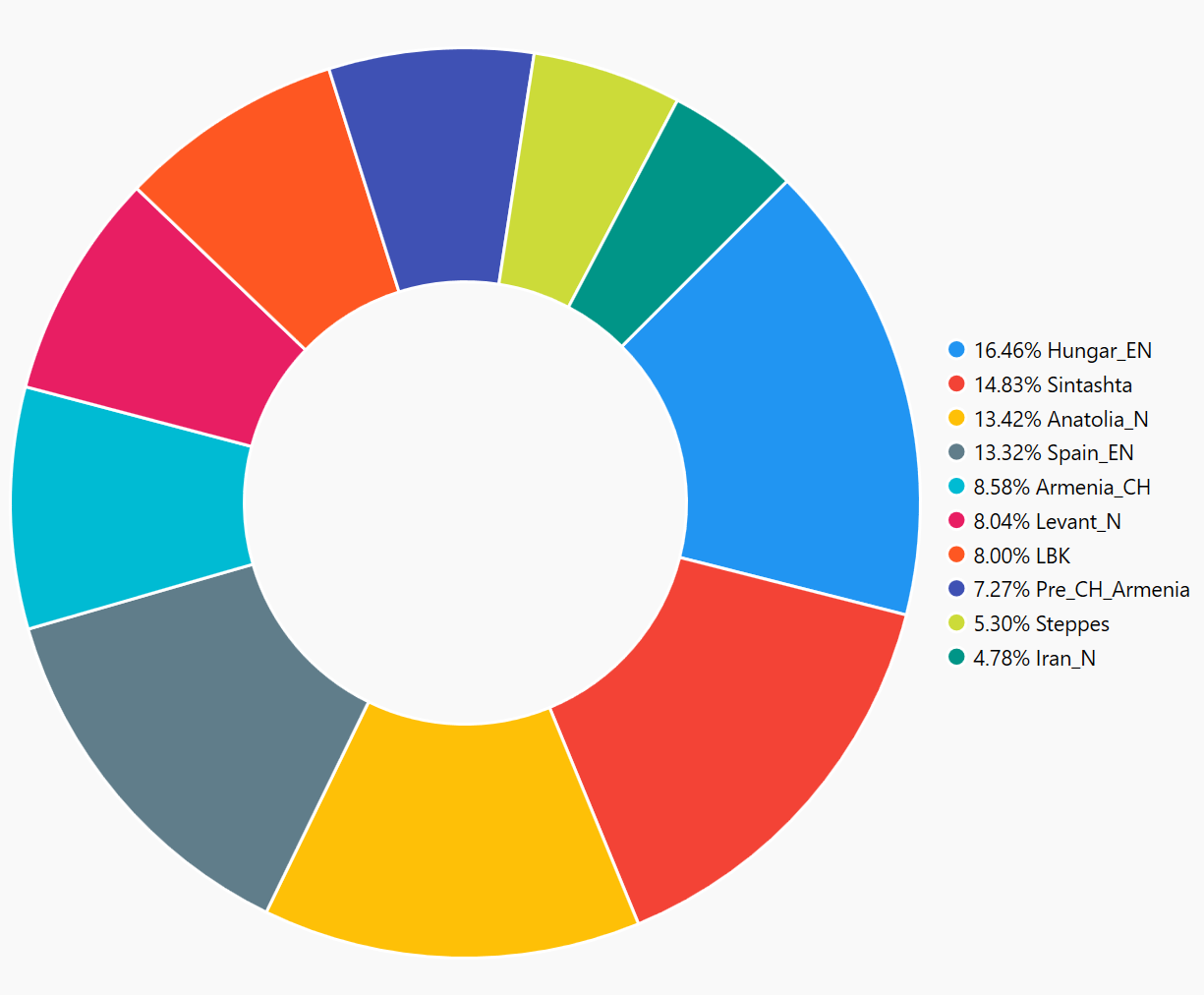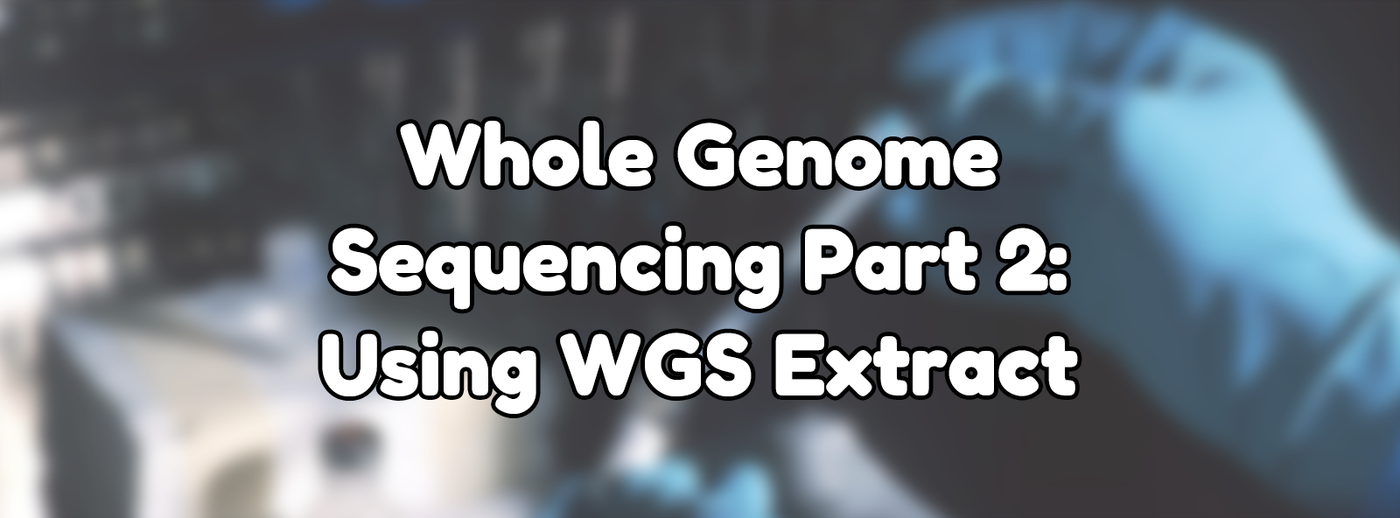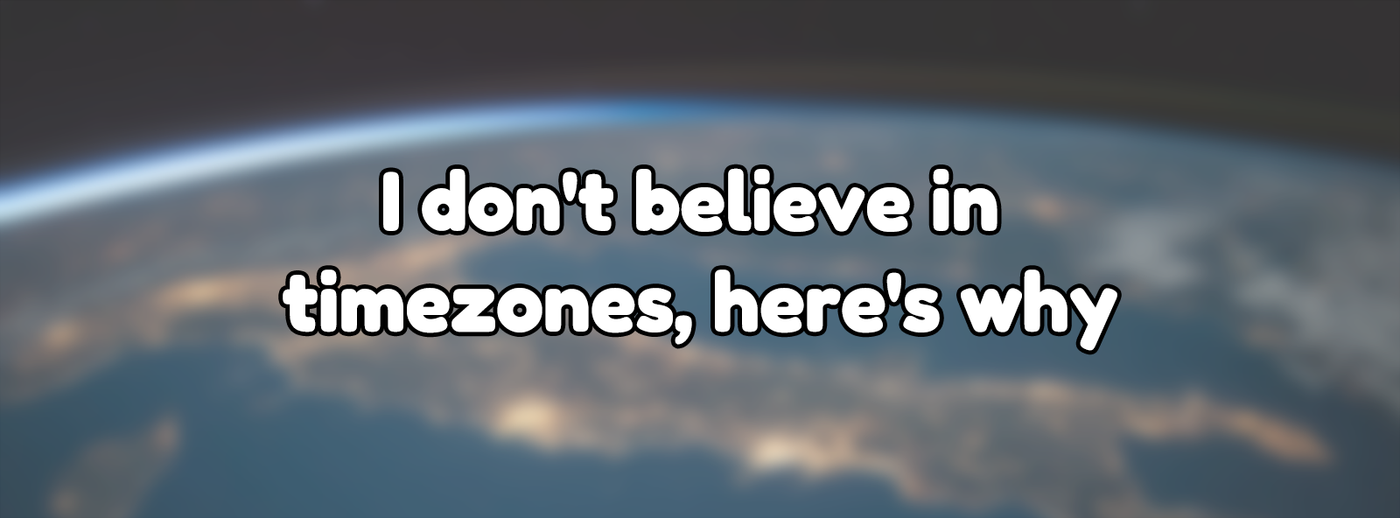
Whole Genome Sequencing Part 3: Ancestry Analysis
Posted on Jul 11, 2025 by Maddy Miller
In Technology with tags Explainer, Genetics
Part 3 in a series on Whole Genome Sequencing
1357 words, 5 minutes to read
In my last article in this series, I covered using WGSExtract to convert your data into various formats or do some very basic forms of analysis. If you’re following along with this article, you’ll need to be able to convert formats, so I’d recommend reading that one first 😊. In this article I’ll be covering ancestry analysis, specifically admixture. Quickly covering online services you can upload to, as well as ways to do it on your local machine to avoid uploading your genetic data to third parties.
What is Admixture?
Admixture, in the context of genealogical ancestry, is the process of estimating the various mixtures of genetic ancestry by comparing it to the known DNA of populations from a set of given regions. So basically, these admixture models are statistical models that can mash various known populational genetic differences together and tell you what mashup best approximates your own genetics.
The admixture calculators and models we’ll be using in this article specifically act on autosomal DNA. So that means chromosomes 1 through 22, not including mitochondrial DNA or the sex chromosomes. This means the output will work fine regardless of your sex chromosomes, unlike Y chromosome haplogroups as covered in the last article for example, which requires a Y chromosome.
Limitations
These models and calculators are inexact, and more useful for anthropological research across larger-scale populations rather than individually estimating ancestry. Due to this, they’re not objective and shouldn’t be taken as conclusive. If you get a result that doesn’t match your beliefs, it doesn’t necessarily mean your beliefs aren’t true. The output also doesn’t “mean” anything. If you’ve never been to Italy before and your results say you’re 30% Italian, it doesn’t mean you’re now Italian. Ancestry is not culture nor nationality.
It's extremely understandable to be curious about where you come from, but these systems in general are for entertainment purposes. They are not conclusive proof that the reason you love pizza is that you’ve secretly been Italian all along (you love pizza because it’s pizza). It’s important to keep this in mind when reading your results. They’re fun to explore, but they don’t fundamentally change who you are as a person.
Data Privacy
Another significant downside when it comes to online models and services, is the data privacy aspect. I’ve gone over this in every genetics article I’ve written so far so I’ll keep it short, but I feel like every time I write one of these another handful of data breaches occurs. Genetic data can be dangerous if it gets into the wrong hands, and genetics companies generally shouldn’t be trusted with your data. It is up to you whether you’re comfortable with this risk, but please be aware that if something does occur, it’ll also affect anyone closely genetically related to you.
Online ancestry services
If you’re wanting to use some of the various online ancestry services with your WGS data, most actually accept data uploads. While many will still require a fee to do the ancestry data processing, it’ll usually be substantially lower than if you had to do a full DNA kit. If you’re looking for a free option, as of writing GEDMatch have a few admixture calculators that you can run without paying money. They appear to be similar calculators that will be run later in the local steps later on, so you will be able to get similar results without uploading your data if you’re willing to put more effort into it.
To do this, you’ll need some exports created by WGSExtract. The process to do this was covered in my last article, linked here. The WGSExtract manual is also a useful resource, as it has an up-to-date table of what sites support each data output format. See the 1.4.1 Microarray Test File Generation (Autosomes, etc) section. Something worth noting from the manual, is that most sites don’t support their own format very well when output via WGSExtract. In general though, it’s worth trying a few different formats if you run into trouble.
To help demonstrate what these often look like in this article, a friend who works with some of these models offered a massive favour to generate me a report without having to upload my data anywhere. I’ve attached the quick summary of the report I received from them here. Usually, these online services will attempt to make the reports look fancy and detailed, rather than just displaying raw data.

Locally run admixture services
Locally run admixture services, unlike the online ones, are usually less user-friendly. There’s an inherent assumption that you at least vaguely know what you’re doing. For this section, I’ll be using the free version of the software Admixture Studio for Windows as an example. It’s not the only software that can run these admixture calculators, but it’s the one I’ve used.
Unlike most online tools where you don’t need to choose the admixture model you want to run, for these cases you do. Different models are built for different purposes. Some for modern ancestry, some for ancient. The regions around the world they work well for, or can even output in their analysis, also differs. This page covers the available models in the Admixture Studio software, and what populations they work best for. Given my results in the earlier report, the Dodecad models should theoretically work best for me.
Running a calculator
Once you’ve worked out what admixture calculator is likely best for you, you can start running it in Admixture Studio (or whatever other software you’ve chosen to use). I personally found that the WGSExtract “Combined Kit” output performed the best, so I used that as my raw data source. For this example, I’ve chosen to do the “Mephisto K10” calculator, mostly because it’s an ancient one that matches my earlier modern report.
After a few minutes, it provided the following large chart,

As you can likely tell, these results are significantly more raw than what you would get from an online service. Some of the population names may be cryptic, but you can usually find out what they are by searching the calculator name and the population code. For example, I found that “LBK” as mentioned in my ancient DNA output refers to “Linearbandkeramik,” a neolithic eastern European and Balkan culture associated with archaeological pottery findings.
You’ll also receive a fairly complicated list of different mixtures on the right hand side of the output. These are basically the different possibilities that could add up to your DNA using different methods. If you just want basic data the pie chart is likely good enough, but the data on the right is basically the raw output of the statistical model if you’re interested in diving deeper. I’m not a statistician so a lot of it honestly flies over my head, so I’m not going to go too deep into that part.
The good part about running these locally though, is that you can run as many of these calculators as you like. It’s worth noting though, that if you run one that very much does not match your ethnicity, you might get weird results. If you’re Anglo-Saxon British and you run yourself against the “BAT” (Balkan, Anatolian, Turkic) Dodecad calculator, it’s going to try and somehow fit you into that triad of data. It’s not going to say you’re British, because it doesn’t know what “British” is.
Conclusion
Overall, messing around with admixture models can be fun. It’s cool to see your DNA visualised in various ways, and population similarity models is a cool way to do it. It’s important to remember the limitations of these models however and remember that connections to an area are more than just what’s in your DNA.
This has been an interesting series to write and helped me find an outlet for my hyper-fixation into genetics. While I currently don’t have plans to write a fourth part for this series, maybe I’ll be inspired at some point in the future, or someone will send me a good idea that inspires me. If you’ve come this far, thank you for reading my foray into genetics and WGS, I hope it was helpful.



